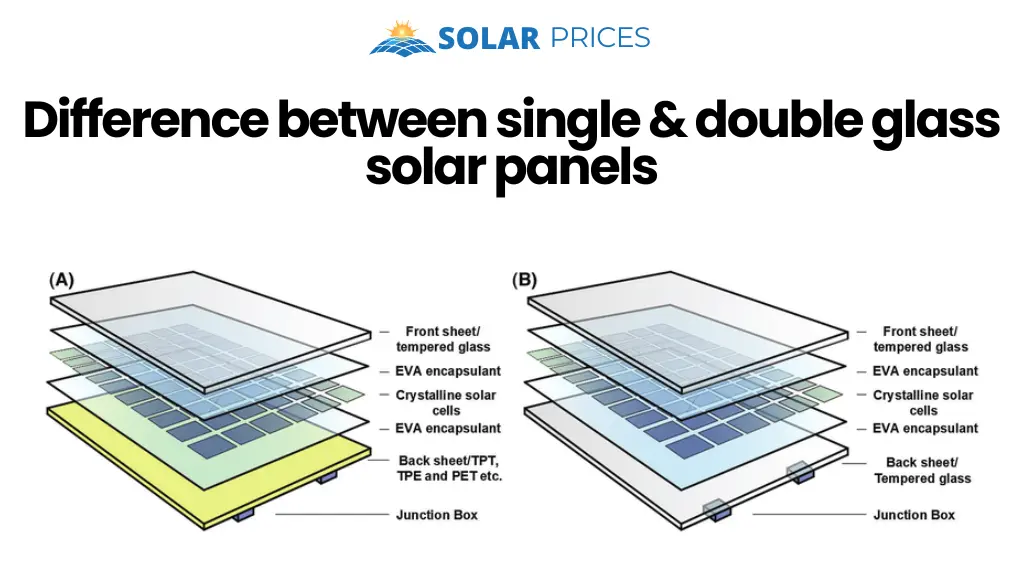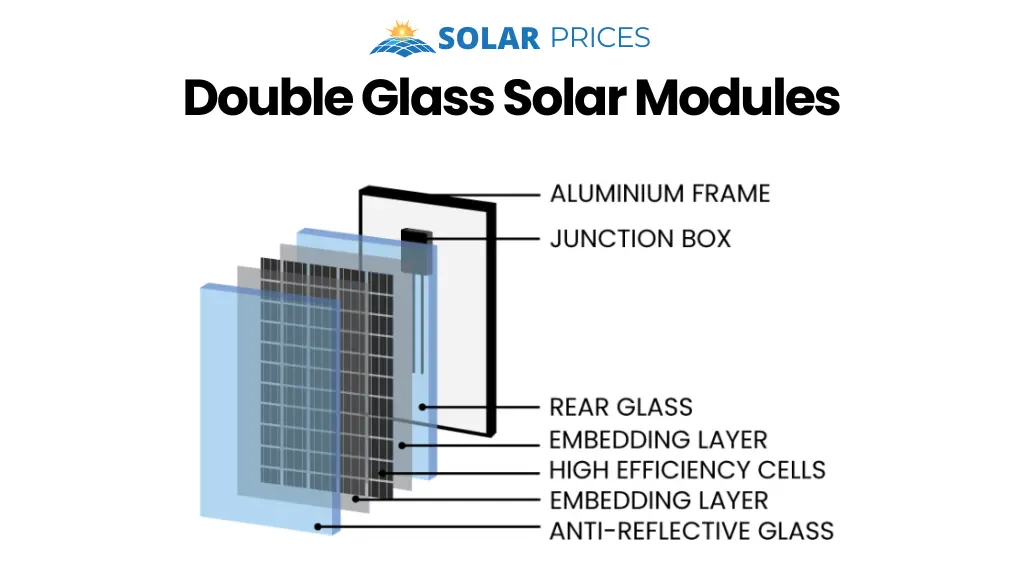Difference between Single-glass and Double-glass Solar Panels | A Detailed Overview

For the sake of simplicity, a solar panel is a kind of photo-sensitive semiconductor sheet (solar chip or photocell) that utilizes sunlight to produce electricity directly. It is an instant source of electric power under specific working conditions. Investing in single-glass or double-glass solar panels can be very fruitful as the sun is an excellent, reliable, and sustainable energy source for millions of years ahead.
When we decide to harness free solar energy with solar panels, we encounter double-glass or bifacial and single-glass or monofacial solar panels in the market. Understanding what type of solar panel you will purchase is necessary.
The solar panels are a fundamental part of a solar system. Therefore, they should be chosen with due market research and an understanding of the difference between various types like single or double glass solar panels.
In this article, I will explain single-glass and double-glass solar panels and the differences between them. Each type has its pros and cons. Let’s explore which is suitable for your solar system.
What are Single-glass Solar Panels?
Single glass solar panels or monofacial solar panels consist of a single layer of glass. In simple words, these panels capture sunlight from one side(front side). The traditional design includes a front tempered glass layer, a layer of PV cells, an opaque back sheet, and an aluminum frame.
The function of a glass covering is to protect the photovoltaic cells from external elements. The opaque polymer sheet behind the panel covers and protects the layer of PV cells from being damaged from the backside.
Front glass can protect solar cells from physical stress, dust, snow, wind, and moisture. The whole solar structure of a panel is held in place within an aluminum frame, providing strength against accidents or mishandling during the transportation and installation process.
Single glass solar panels have been tested and proven reliable and efficient over time, as these are the most widely installed panels throughout the country. Also, these panels have been present in the market for a long time. So, monofacial or single-glass solar panels are widely available and more affordable.
What are Double-glass Solar Panels?

Double-glass or bifacial solar panels consist of two layers of tempered glass covering the front and rear sides of the panel. A layer of encapsulant (transparent) is applied between the layer of PV cells and glass. It enhances the durability and longevity of the solar module.
Bifacial solar panels have become famous for their modern design and transparency from the front and back sides. Being able to convert sunlight from both sides into electricity, the double glass solar panels offer 5-25% extra electrical power.
With enhanced strength and durability, this bifcial technology promises minimal deformation to solar cells. The possibility of microcracks in the solar cells during installation has decreased significantly.
Dual glass layered panels have an additional defense against environmental elements such as ultraviolet radiations and moisture. Bifaciality also provides better temperature tolerance to these panels(an additional layer of protection).
Double glass solar panels have little to no power degradation, ensuring more consistent power production in the long term.
However, double glass solar panels will cost you 5-15% higher funds. The dual-layered glass makes these panels heavier, leading to a challenging installation, and they need a sturdier mounting structure.
This means the structure of double-glass solar modules must withstand heavy weights and air pressures. That is why people should invest in double glass panels to get the most out of their solar system.
Single-glass Solar Modules vs. Double-glass Solar Modules
The traditional single-glass solar panels or modules had just a single layer of glass at the front side. Most of the leading brands of solar panels have started manufacturing double glass or bifacial solar panels since a few years ago.
A double glass solar panel consists of two protective glass layers instead of the usual single glass layer and a laminated back sheet on the back side of the panel.
Double glass solar panel type has an extended lifespan. Hence, harvesting more sunlight to produce electricity results in a greater energy conversion output. These panels have an improved look and modern style.
Both types of panels have their plus or minus aspects (pros and cons). Check out the following list of pros and cons of each type.
Pros of Single-glass Solar Panel
- Cost-Effectiveness
- Light weight comparatively
- Simple Installation
- Proven Track Record
- Widely Available
- Anti-PID characteristics
- Low-light performance
- Harsh environment adaptation
Cons of Single-glass Solar Panel
- Durability Concerns
- Limited Aesthetics
Pros of Double-glass Solar Panel
- Increased Efficiency
- Enhanced Durability
- Improved Temperature
- Reduced Degradation
Cons of Double-glass Solar Panels
- 5-15% Higher Cost
- Comparatively Heavier
Choosing the Right Option
There are no hard and fast rules to choose from single and double glass solar panels. It all depends on the solar project size, your budget, and your desired system output.
If cost-effectiveness is your primary concern, single-glass solar panels can be suitable. However, go with double-glass solar panels for enhanced durability, improved efficiency, and modern aesthetics.
Conclusion
The main function of both types of solar panels (namely single-glass and double-glass solar panels) is to capture sunlight and generate electricity. Both do that job efficiently. It is worth remembering that both types have different installation requirements, such as space and mounting height from the ground.
However, aligning with the latest solar panel and PV cell technology is much better. If your budget allows you, you must use double glass or bifacial solar panels with the latest cell technology. They have improved efficiency and lifespan, making this type a top priority. Otherwise, single-glass solar panels are also the right decision. However, there is 5-25% less power production, possibly in the case of single-glass solar panels.
Choosing from single-glass and double-glass solar panels can be critical for you. So, consider installing a resilient, efficient, and durable solar system at your home. Learning the pros and cons of both types may help you make an informed decision.
